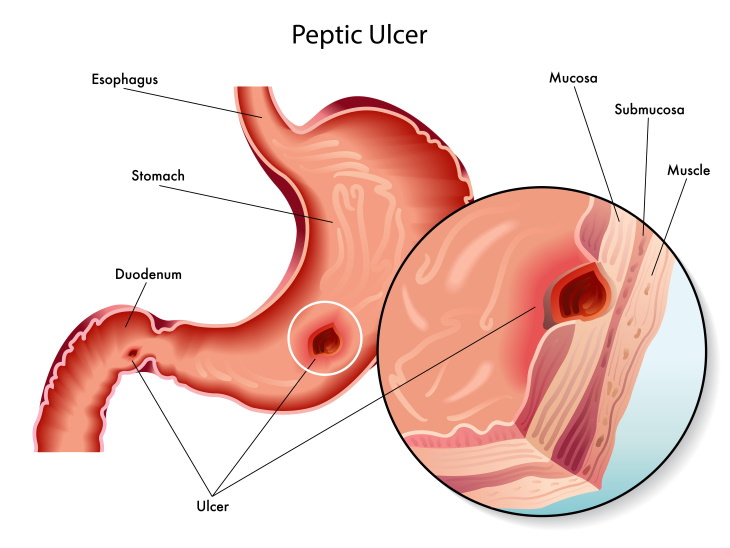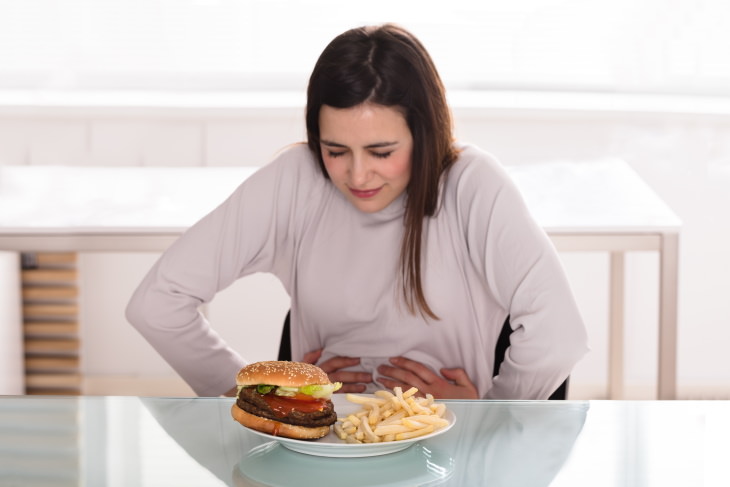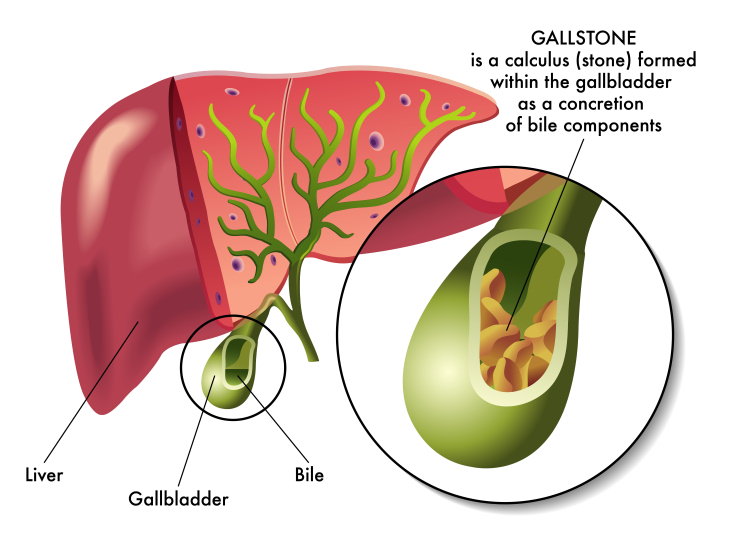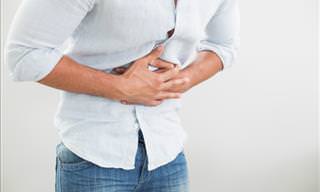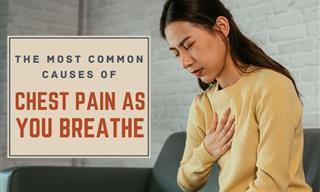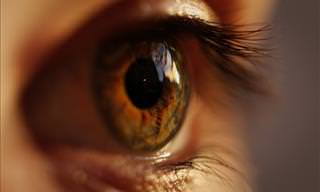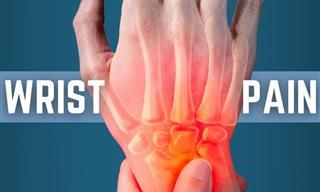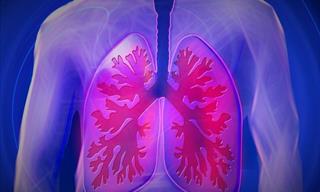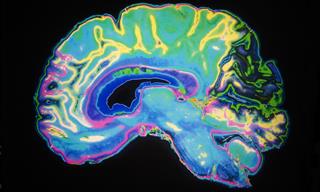1. Dyspepsia
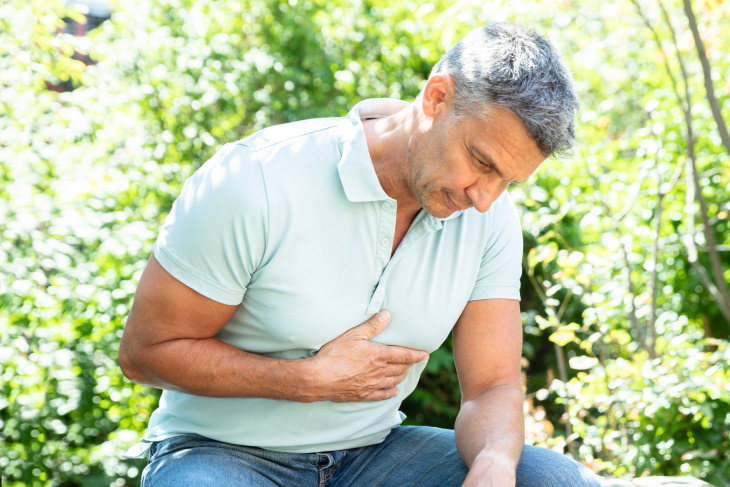
Pain in the upper abdomen may be due to dyspepsia (indigestion). This pain may also be accompanied by a burning sensation, bloating, and nausea. Certain medications, stomach infections, and even thyroid disease can cause dyspepsia. When no specific cause is found, the diagnosis given to the patient is functional dyspepsia.
There are three main types of functional dyspepsia:
- Postprandial distress syndrome - comes with early satiation and a feeling of fullness in the stomach.
- Epigastric pain syndrome - a condition with prominent pain and burning in the upper abdomen.
- Gastroesophageal Reflux Disease (GERD) - accompanied by heartburn in the esophagus, a taste of acid in the mouth and throat, and pain when swallowing.
Although many people have gastroesophageal reflux occasionally, people with GERD have symptoms regularly and the acid present can damage the esophagus, so it's good to talk with your healthcare provider if you experience GERD on an ongoing basis. Read more about GERD here - 6 Signs of Acid Reflux.
2. Food allergy or sensitivity
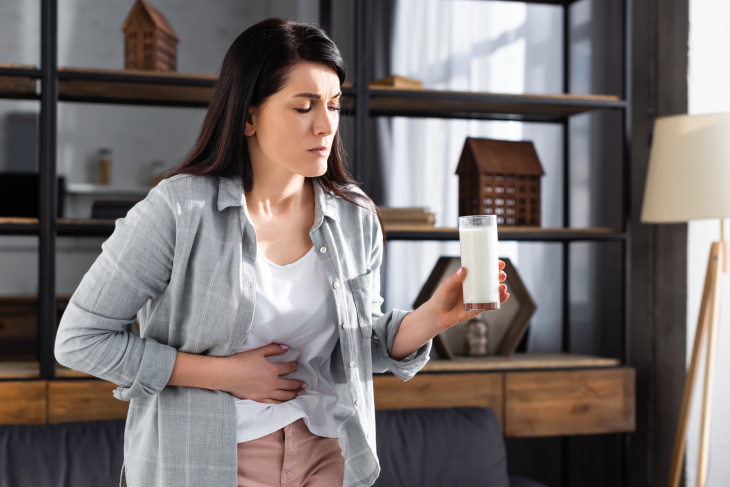
If you’re sensitive to certain foods, they can irritate the stomach and lead to pain. Both food allergies and food sensitivities can bring about stomach pain. Here’s how to distinguish between the two.
- A food allergy happens when your immune system mistakes a certain food for a pathogen and releases antibodies to combat the foreign “invader.” This can lead to a mild to severe or even life-threatening allergic reaction. The most common triggers of food allergies are dairy, nuts, fish and shellfish, soy, wheat, and eggs.
- A food sensitivity (also called food intolerance) occurs when you can’t digest a certain food or it irritates your digestive system. Unlike an allergy, it doesn’t trigger an immune system response. Lactose intolerance is an example of food sensitivity. It occurs when a person doesn’t have enough of the lactase ferment that digests dairy products, so drinking milk causes an upset stomach and pain. Gluten sensitivities (e.g. Celiac disease) and wheat intolerances are also common, but you can be sensitive to any food.
If you suspect that you’re sensitive to a specific food, but you can’t figure out what it is - keeping a food diary is super helpful. Record what you ate every time you have an adverse reaction (drinks and snacks included). Over time, it will help narrow don’t the culprit and you’ll be able to cut the food that’s causing the pain out of your diet.
3. Stomach Ulcers
Stomach ulcers (also known as peptic ulcers and gastric ulcers) are sores that occur in the inner lining of the stomach. Peptic ulcers can also occur in the upper part of the small intestine called the duodenum.
Stomach ulcers can trigger pain anywhere between the upper abdomen and the belly button after eating. Peptic ulcers can be caused by bacteria (most commonly by Helicobacter pylori) or taking medications like NSAIDs (e.g. aspirin, ibuprofen, naproxen) for a long time. Peptic ulcers usually produce burning pain that gets worse after eating spicy foods.
4. Food Poisoning
Stomach pain that occurs immediately or not long after consuming contaminated foods is the most common symptom of food poisoning. In most cases of food poisoning, the food is contaminated by bacteria or viruses, such as salmonella, norovirus, or E. coli. Some other symptoms of food poisoning to look out for are:
- Fever
- Vomiting
- Diarrhea
- Bloating and gas
- Fatigue.
Abdominal cramps caused by food poisoning can persist for hours or days, but most cases of food poisoning will go away on their own if you’re well-hydrated and rest for a few days. If the symptoms persist or are getting worse (e.g. you have a high fever or bloody diarrhea), or you’re experiencing signs of dehydration (e.g. dry mouth, dizziness, extreme thirst), seek urgent medical help.
5. Pancreatitis and gallstones
An inflamed pancreas often triggers pain after eating. The pain starts in the upper abdomen and may spread to the back. Pancreatic pain can be caused by gallstones or due to a genetic health condition, and it may get worse when you’re drinking alcohol and smoking. When pancreatitis is caused by gallstones, they may experience more pain after a large meal or a meal high in fat.
Pain can be accompanied by vomiting or nausea as well. Likewise, people suffering from pancreatitis may notice that their skin or the whites of the eyes turn yellowish. This is a symptom called jaundice.
6. Irritable Bowel Syndrome (IBS)
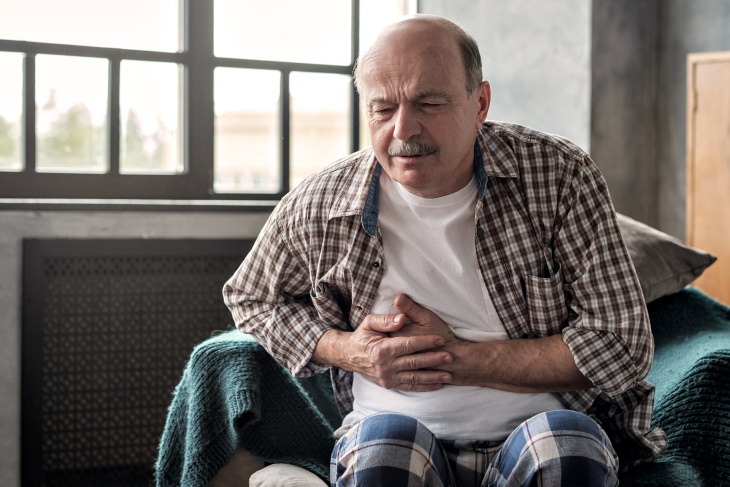
Irritable bowel syndrome is a condition that leads to chronic abdominal pain. Even though pain related to bowel movements is more common for IBS, eating may cause strong intestinal contractions in IBS sufferers as well, which can result in pain in the upper, middle, and lower parts of the belly.
Sometimes, the pain can also spread to the torso. Although there is no cure for IBS, good eating habits can often help diminish the symptoms dramatically. Here are a few useful tips for IBS sufferers who experience postprandial pain:
1. Eat slowly.
2. Have a meal schedule and stick to it.
3. Exclude extremely fatty and processed foods, as well as alcohol and sugary drinks from your diet.
4. Get plenty of exercise to normalize intestinal contractions.
Read more about treating IBS at home here - How to Manage Irritable Bowel Syndrome.
Uncommon Causes of Postprandial Pain

- Eating spicy foods that contain chili peppers can irritate the lining of your digestive tract and stomach, and may result in a burning sensation.
- Swallowing air when eating called aerophagy can lead to burping and even sharp pain. It can occur when you chew gum, eat foods like cabbage, onions, beans, and broccoli, or it may be a recurrent issue caused by the anatomy of your digestive tract or stomach.
Intestinal angina (mesenteric ischemia): A problem with blood supply Overactive thyroid can sometimes cause stomach pain and diarrhea, but it’s rarely the first symptom to appear.
- Certain cancers, such as the cancer of the esophagus or stomach.
When to See Your Doctor
If you’re experiencing any unusual or lingering pain for several days, make sure to schedule an appointment with your physician. Any pain that is severe and debilitating requires urgent medical care, especially if it’s accompanied by a fever, chills, rapid heart rate, jaundice, dehydration, or severe vomiting.
Share this information with those who will find it useful!
 Go to BabaMail
Go to BabaMail




